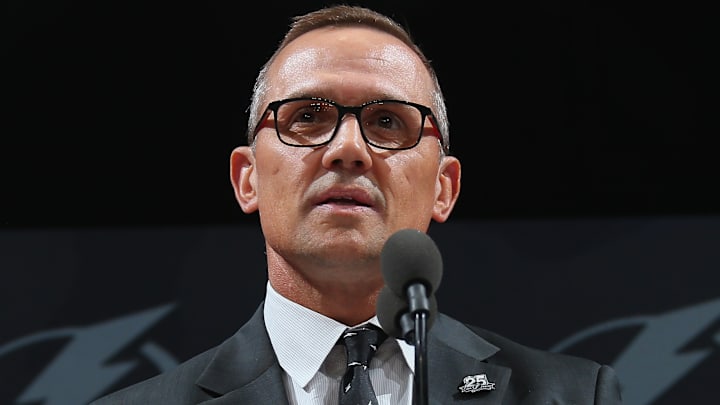The real question isn’t if the Detroit Red Wings will reach the playoffs, but how far this team is prepared to go once they arrive.
Detroit is coming off their ninth straight year without making it to the postseason. It’s been painful for everyone involved and general manager Steve Yzerman has clearly felt the heat.
But instead of cutting and running, the former captain has spent the entire offseason trying to make moves. They acquired former all-star goaltender in John Gibson from the Anaheim Ducks and picked up veterans James van Riemsdyk and Mason Appleton.
The penalty kill was historically awful
We’ve underscored this issue for months now, but it bears repeating: the Red Wings’ penalty kill during the 2024–25 season was not merely subpar—it was historically inept.
Finishing dead last in the NHL, the unit also earned the dubious distinction of being the third-worst penalty kill in league history. In that context, it’s somewhat surprising that no coaching staff changes occurred during the offseason.
That said, Steve Yzerman’s under-the-radar acquisitions—James van Riemsdyk and Mason Appleton—may prove pivotal in reversing the team’s short-handed woes. While labeling van Riemsdyk a “penalty-killing specialist” might be a stretch, he has developed a well-earned reputation as a reliable and intelligent contributor on the PK.
His positional awareness and defensive discipline—paired with his willingness to exert maximum effort—make him a subtle but valuable asset in that phase of the game.
Some fans expressed skepticism about the signing, pointing primarily to van Riemsdyk’s age—he’s now 36—and the fact that Detroit is largely constructed around a young core. But that critique overlooks the veteran’s potential mentorship value, as well as his enduring on-ice utility.
In 71 games with the Columbus Blue Jackets last season, van Riemsdyk posted a respectable 36 points (16 goals, 20 assists). To secure that level of production at a mere $1 million cap hit is a massive steal.
For Detroit, the signing offers low risk and high potential reward. If van Riemsdyk can replicate his offensive output and bolster the penalty kill in 2025–26, it’s entirely plausible the Red Wings will look to extend his tenure beyond a single season. This might be one of Yzerman’s savvier moves.
Appleton may prove to be an even more astute acquisition. At seven years younger than van Riemsdyk, Appleton offers a faster pace, a sharper edge on the forecheck, and a calculated ability to force turnovers.
His style of play compels opposing power play units to adjust their schemes mid-execution—often uncomfortably—thereby disrupting their rhythm and tempo. While it would be unrealistic to expect Detroit’s penalty kill to ascend from worst to elite in a single season, the presence of both van Riemsdyk and Appleton all but guarantees the Red Wings will not finish 32nd out of 32 again.
Leadership is critical
It’s not merely their skills that will distinguish them on the ice, but the intangibles—those ineffable qualities that define true leadership. While van Riemsdyk may not don the captain’s “C,” there is little doubt he possesses the caliber and presence to earn it, were he so inclined. His leadership transcends formal titles; it is the kind of influence that permeates and shapes a team’s culture from within.
Dylan Larkin, Detroit’s current captain, stands to gain immensely from van Riemsdyk’s seasoned example, and there is every indication that the two will forge a particularly synergistic bond. Van Riemsdyk’s respect among peers was never cultivated through bravado or divisiveness, but rather through consistent professionalism, emotional intelligence, and a steadfast commitment to leading by quiet example.
Ultimately, this acquisition may prove to be a masterstroke by Yzerman. It addresses the team’s most glaring deficiencies—both on the ice in terms of penalty kill efficacy and off the ice in cultivating a resilient, mature locker room dynamic.
Detroit is poised to defy expectations.
More from Octopus Thrower
